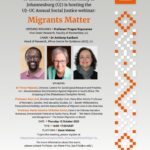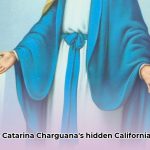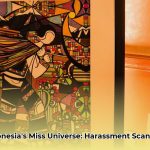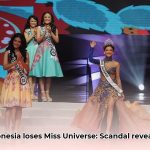Delve into the captivating life of Maria Catarina Charguana, a woman whose existence embodies the convergence of cultures and monumental shifts defining 19th-century California. Born in 1848 at Mission San Fernando Rey de España, she possessed a unique blend of Luiseño, French-Canadian, and Shoshone ancestry, a tapestry woven into the very fabric of this transformative period. This long-form informational article unveils her captivating narrative, seeking to illuminate what we know, what remains elusive, and how dedicated efforts can ensure her legacy endures. Prepare for an immersive journey, exploring the challenges she surmounted, the influence of her diverse heritage, and the vital roles historians, museums, and the public play in preserving her memory. For more information, see her profile here.
Unraveling the Mystery: Maria Catarina Charguana’s Life
Maria Catarina Charguana’s story presents a compelling, albeit perplexing, historical puzzle. Born in 1848 at Mission San Fernando Rey de España, she inherited a diverse heritage – a mix of Luiseño, French-Canadian, and Shoshone – mirroring the dynamic (and sometimes turbulent) cultural landscape of 19th-century California. Surprisingly, definitive information about her remains scarce. What accounts for this informational void, and how can it be addressed through further historical research?
A Life Shrouded in Mystery: Family and Origins
The identities of Maria Catarina’s parents, Jean Baptiste Charbonneau and Margarita Sobin, deepen the mystery. Jean Baptiste Charbonneau, son of the famed Sacagawea, carried his own weight of historical significance. Margarita Sobin, a Luiseño woman, represents a culture often overlooked in historical accounts. The specific dynamics of their relationship remain unclear. The use of “Charguana” in her baptism record, instead of “Charbonneau,” suggests a potentially less formal union, maybe a relationship lacking official church sanction. This immediately triggers a cascade of questions about her formative years: What defined her childhood experiences? Did she foster a meaningful connection with her father? Was she nurtured within a supportive family environment? The absence of documented details necessitates a careful reconstruction of fragments.
This informational scarcity isn’t unique to Maria Catarina. The historical record frequently overlooks Indigenous women’s experiences, resulting in significant knowledge gaps. Their narratives become muted, hidden, or simply unrecorded. Restoring Maria Catarina’s narrative demands a detective’s scrutiny, a historian’s commitment, and a genuine dedication to challenge the biases ingrained within existing historical accounts, especially genealogical databases and mission records. Actively seeking out overlooked sources becomes essential to fill the voids.
The Search for Clues: Putting Together the Pieces
Her baptism record provides valuable entry points: a date, a location, and her parents’ identities – tangible facts that offer a secure foundation. The baptism, performed on May 28, 1848, was recorded by Father Blas Ordaz as entry #1884. Genealogical investigation, by scrutinizing family lineages and records, might uncover additional relatives, expanding into a broader family history. What occurred before and following her baptism? These constitute eras requiring deep investigation where verifiable information diminishes considerably.
Beyond conventional official records, we must pursue alternative resources. Oral histories within Luiseño communities stand to prove indispensable. Transmitted across generations, these narratives are capable of illuminating components of her life and the corresponding periods largely disregarded by formal records. These often-overlooked oral traditions become critical for acquiring a more precise and comprehensive understanding of California’s historical Indigenous women.
Census data from the era may reveal more regarding her adulthood – details about marriage, offspring, profession, and residence – creating an image of her everyday existence. What defined her daily trials and accomplishments? How did she sustain herself? These questions fuel the pursuit for answers.
The Curious Case of “Charguana”: A Name’s Hidden Story
The surname “Charguana” offers a particularly compelling point of inquiry. Why this specific name in lieu of “Charbonneau”? Was it simply a spelling deviation? Or, perhaps, a nickname? Or, even still, an alternative family designation employed within the community? Possibly, it embodies a divergent dimension of her identity, unifying her more closely to her Luiseño heritage. Understanding the genesis and meaning inherent to this name stands to reveal substantial clues about her family background and cultural identity. This seemingly insignificant discrepancy stands to unlock a significantly larger portion of the enigma.
The name Maria, a short form of Maria, is of German origin but was moderately popular in the English-speaking world at the time.
Maria Catarina’s Legacy: Future Research and the Path Forward
The limited detailed information concerning Maria Catarina accentuates a crucial challenge for historians: reconciling incomplete data. Nevertheless, this challenge also unlocks prospects for groundbreaking research. An interdisciplinary methodology—fusing conventional genealogical inquiry with oral history, anthropological analyses, and intimate partnerships with Indigenous communities—constitutes the key for revealing more of her narrative. Respectful and ethical interaction with these communities remains essential for guaranteeing precision and appropriately representing her legacy.
Next Steps: A Collaborative Effort
Moving forward requires a collaborative effort:
- Historians/Genealogists: Deepen research into Mission San Fernando records, genealogical databases, and Luiseño oral histories; Investigate all possible variants of the “Charguana” surname. Longer-term goals include publishing a comprehensive biography and organizing academic collaborations and conferences focusing on the life of Maria Catarina and similar figures.
- Museums/Cultural Centers: Develop exhibits showcasing Maria Catarina’s life and heritage; Establish lasting partnerships with Indigenous communities to ensure authentic representation. Longer-term goals include collaborating on future exhibitions and educational programs, ensuring accurate and respectful representation of her life and culture.
- Public: Raise awareness via social media and educational resources; Support research efforts. Longer-term goals involve funding ongoing research, creating accessible educational materials, and promoting a broader understanding of California’s diverse history.
Maria Catarina Charguana’s narrative surpasses the tale of one individual. It serves as a reflection of the resilience displayed by women when faced with social and cultural transformations. It underscores the necessity for inclusive historical inquiry that accurately portrays all individuals, especially those originating from marginalized communities often absent within the historical record. Unveiling her narrative transcends a mere academic exercise; it becomes an urgent act of cultural preservation, enriching our understanding of California’s past – a dynamic that has been reshaped by the Mexican-American War. Much remains to be discovered, with a multitude of pieces still awaiting assembly.
How to Research California’s Indigenous Women in the 19th Century
Maria Catarina Charguana, born in 1848 at Mission San Fernando Rey de España, offers a window into the lives of California’s Indigenous women during a period marked by cultural collision, legal disenfranchisement, and remarkable strength. Her mixed ancestry – Luiseño, French Canadian, and Spanish colonial – reflects the melting pot of the era. However, uncovering these hidden histories requires navigating a landscape of scarce and often biased records. Oral histories offer a valuable counterpoint.
Navigating the Historical Landscape
The 19th century in California was characterized by dramatic shifts. The Mexican-American War (1846-1848) and the Gold Rush (1849) irrevocably altered Indigenous lives, creating upheaval and displacement. Missions, initially centers of religious conversion, transformed into sites of cultural suppression. Legal disenfranchisement and violence were widespread. Yet, this very turbulence paradoxically established rich, albeit challenging, conditions for historical research.
Comprehensive records detailing individual Indigenous women’s experiences remain scarce. Many extant sources reflect the dominant culture’s skewed perspective, often biased and lacking nuance. How to research California’s indigenous women in the 19th century effectively necessitates a multi-faceted approach, carefully balancing available records with meticulous recognition of their inherent limitations. An interdisciplinary approach, combining historical methodologies with anthropological and sociological approaches, is key.
Unearthing Maria Catarina’s Story: A Case Study
Maria Catarina’s multi-ethnic heritage – Luiseño, French Canadian, and Spanish colonial – further complicates historical analysis. What fragments of her life can be pieced together? While mission records can shed light on her birth and early life, relying solely on these documents presents challenges.
Oral histories, if obtainable, present crucial viewpoints. A comparative approach strengthens any research effort by comparing experiences of women from diverse groups, contextualizing individual stories. Stories conveyed across generations offer invaluable insights, filling in informational gaps left by official documents and giving voice to historically silenced experiences. Partnering with contemporary Indigenous communities becomes paramount for responsible research, demonstrating respect for cultural sensitivities.
Beyond Maria Catarina: A Broader Research Strategy
The challenges in researching Maria Catarina are not unique. Key steps for a broader research strategy include consulting archival resources, engaging with Indigenous communities, analyzing published works, employing interdisciplinary methods, and critically evaluating all sources.
- Consult Archival Resources: Begin with mission records, census data, and university archives.
- Engage Indigenous Communities: Seek guidance from researchers who prioritize their perspectives.
- Analyze Published Works: Review existing works on Indigenous women.
- Employ Interdisciplinary Methods: Combine historical methodologies.
- Critically Evaluate Sources: Acknowledge biases within historical documentation.
The Power of Comparative Analysis
A comparative approach can augment your research. Compare and contrast the experiences of women belonging to distinct Indigenous groups within California. Analyze how their individual lives were molded by factors, including geographic location, tribal affiliation, and interactions with the dominant culture. This wider perspective contextualizes personal stories like Maria Catarina’s, furnishing a more complete image.
*Limited primary sources pose













